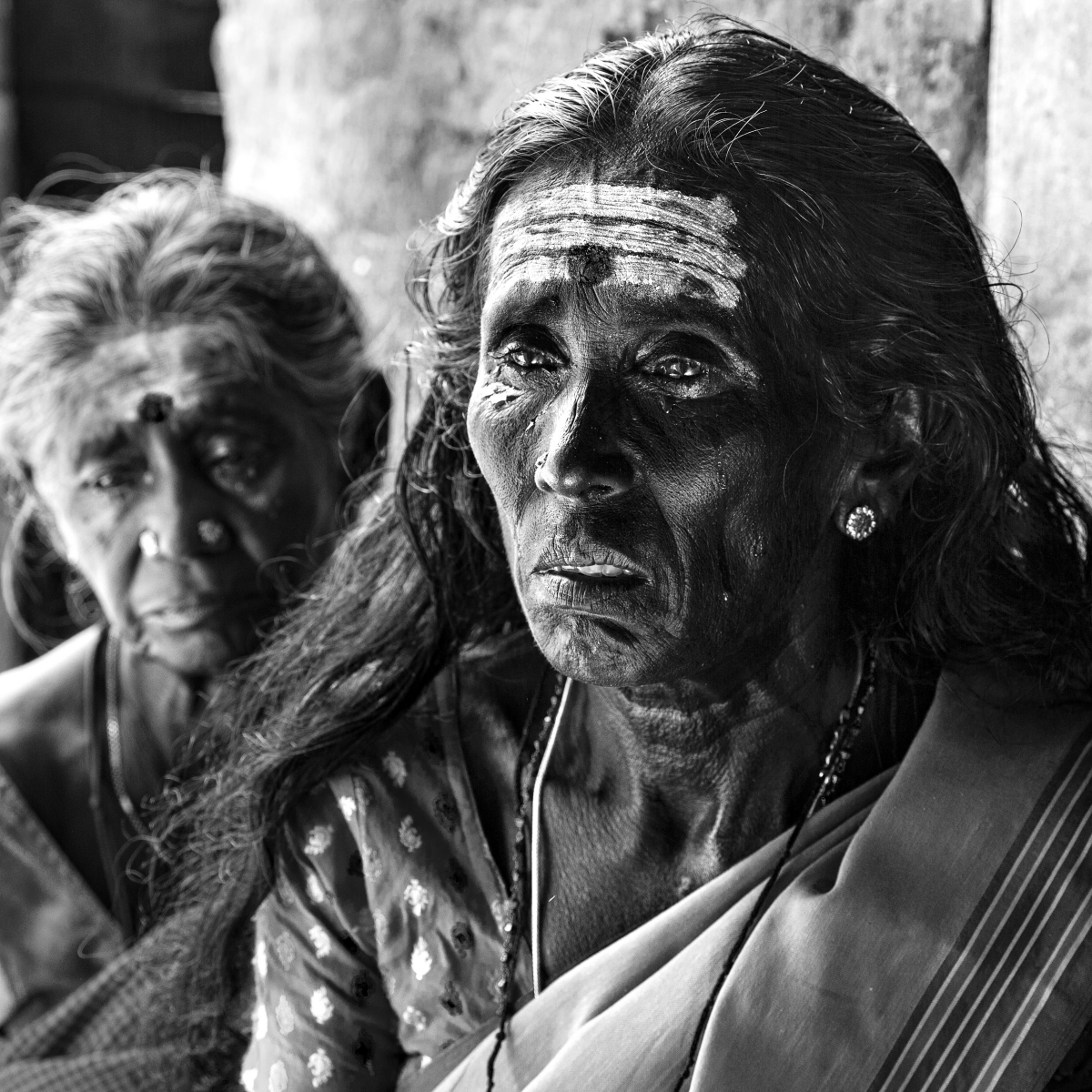Asha Thadani
Coal miners including this child, work 17-18 hour shifts in the pits of Jharia. Over 4 lakh of them labour to produce the fuel that powers this nation.
The Mallah are boatmen, fishermen and also recoverers of abandoned corpses that are disposed of in the river that Hindus consider their most sacred, the Ganga.
The Joginis of Andhra Pradesh and Telangana are born into a life of ritualised sexual slavery. They are forced to live outside the village but exploited in the most direct fashion by a society which sees them with both lust and contempt.
Prevented by dominant castes from entering temples, the Ramnamis have brought god to their body: at once an act of religious devotion and social defiance.
Even butchers have a hierarchy in India and at the bottom are those who make it possible to retrieve the brains of goats by burning the skulls of fur and hair but are prevented from entering the slaughterhouses they help keep running.
Practitioners of one the most moving and intense art forms of India, Kerala’s Theyyam artistes bring divinity to their body and are accepted as having done so — so long as the performance lasts.
Rat eaters sound less acceptable than rat catchers, which is how, incorrectly, the term Musahar (eaters of rats) is usually rendered into English. But some of these exploited have found avenues to reinvent themselves.
Professional mourners are found in communities across India. Personal association with death, a bad omen for the rest, is imposed on these women who must grieve for others.
The Dusadh women adorn their bodies with virtual trinkets and ornaments that they are denied in real life by caste. Like the Ramnamis, they wear their defiance of the norms imposed on them.











No comments:
Post a Comment